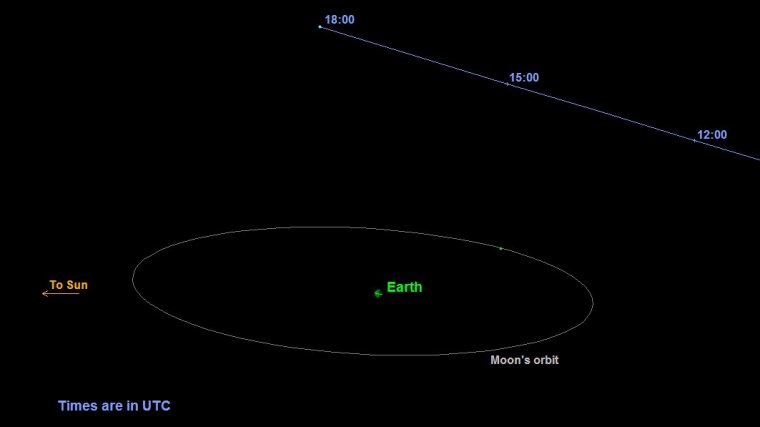| News / Space News |
Halloween Asteroid a Treat for Radar Astronomers
NASA scientists are tracking the upcoming Halloween flyby of asteroid 2015 TB145 with several optical observatories and the radar capabilities of the agency's Deep Space Network at Goldstone, California.

This is a graphic depicting the orbit of asteroid 2015 TB145. ![]()
The asteroid will fly past Earth at a safe distance slightly farther than the moon's orbit on Oct. 31 at 10:05 a.m. PDT (1:05 p.m. EDT).
Scientists are treating the flyby of the estimated 1,300-foot-wide (400-meter) asteroid as a science target of opportunity, allowing instruments on "spacecraft Earth" to scan it during the close pass.
Asteroid 2015 TB145 was discovered on Oct. 10, 2015, by the University of Hawaii's Pan-STARRS-1 (Panoramic Survey Telescope and Rapid Response System) on Haleakala, Maui.
According to the catalog of near-Earth objects (NEOs) kept by the Minor Planet Center, this is the closest currently known approach by an object this large until asteroid 1999 AN10, at about 2,600 feet (800 meters) in size, approaches at about 1 lunar distance (238,000 miles from Earth) in August 2027.
At the point of closest approach, it will be no closer than about 300,000 miles -- 480,000 kilometers or 1.3 lunar distances. Even though that is relatively close by celestial standards, it is expected to be fairly faint, so night-sky Earth observers would need at least a small telescope to view it.
YOU MAY ALSO LIKE


